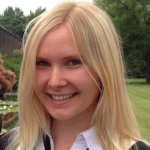Time and Astronomy in the Petrie Museum
By Hannah L Wills, on 9 February 2018
During a recent shift at the Petrie Museum of Egyptian Archaeology, I was asked by one visitor, ‘what’s your favourite object in the museum?’. As anyone who has visited the Petrie Museum will know, there is no shortage of fascinating objects on display, from the museum’s 12th dynasty pottery rat-trap, to the amazing Hawara mummy portraits (naming but two of my go-to favourites when showing visitors around the collection). However, the object I find most interesting within the museum’s collection is a small artefact found in one of the cabinets in the museum’s pottery room, in and amongst a group of objects dating from the Ottoman period (1517 – 1914 CE). The object is identified on its label as ‘UC4108 Wooden astrolabe with brass dial. Probably made for teaching purposes rather than use’. From the moment I first spotted the object I was intrigued. What exactly is an astrolabe, and how would it have been used?

The Petrie Museum’s astrolabe (UC4108), displayed with a group of objects from the Ottoman Period (Image credit: Hannah Wills)
What is an astrolabe?
An astrolabe is a kind of scientific instrument, used to calculate the time and to make observations, such as the height of the Sun and stars with respect to the horizon or meridian.[i] In the Islamic world, astrolabes served an important function in determining prayer times, and the direction of Mecca.[ii] Such instruments date back to ancient times and were used to reveal how the sky looks from a specific place at a specific time. The face of the astrolabe features a map of the sky, with the celestial sphere mapped onto a flat surface. The instrument features moveable parts that allow the user to set date and time. When this is done, the face of the instrument represents the sky, allowing the user to solve astronomical problems visually.[iii]
Teaching astronomy
Though many astrolabes used in the medieval period were made from either brass or iron, the Petrie Museum’s astrolabe is made from wood, with a brass dial, known as the ‘rete’ (in Arabic al-‘ankabūt), affixed to the top.[iv] The museum’s catalogue suggests that the object is ‘too crudely made for any practical purpose other than teaching’.[v] Historian Johannes Thomann notes that in the Islamic world from around the mid-eighth century onwards, the main function of the astrolabe was as a tool for teaching introductory astronomy, supported by texts written in an instructional style that explained the use of key astronomical instruments.[vi] The ‘crude’ finish of the Petrie Museum astrolabe, along with its size, would have made it imprecise, and ultimately unfit for carrying out practical calculations. The instrument might instead have been used for basic exercises to familiarise pupils with astronomy, and the process of making observations.
To find out more about how astrolabes work, you can watch this short TED talk, “Tom Wujec Demos the 13th-Century Astrolabe.” New York: TED, 2009.
Do you have a favourite object in any of the UCL museums? Tweet us @ResearchEngager or find us in the museums and tell us about it!
References:
[i] ‘Astrolabe’, in Encyclopaedia Britannica, https://www.britannica.com/science/astrolabe-instrument [Accessed 8 Feb 2018].
[ii] Unit 4: Science and the Art of the Islamic World, in Maryam D. Ekhtiar and Claire Moore, Art of the Islamic World: A Resource for Educators, https://www.metmuseum.org/learn/educators/curriculum-resources/art-of-the-islamic-world [Accessed 8 Feb 2018], p. 94.
[iii] ‘The Astrolabe: An Instrument with a Past and Future’, http://www.astrolabes.org/ [Accessed 8 Feb 2018].
[iv] Sonja Brentjes and Robert G. Morrison ‘The Sciences in Islamic societies (750-1800)’, in Robert Irwin, ed. The New Cambridge History of Islam. Vol. 4. The New Cambridge History of Islam. Cambridge: Cambridge University Press, 2010, p. 596.
[v] UC4108 Wooden Astrolabe, Petrie Museum Online Catalogue, http://petriecat.museums.ucl.ac.uk/detail.aspx [Accessed 8 Feb 2018].
[vi] ‘Interviews with the Experts’, Charles Burnett interview with Johannes Thomann, Astrolabes in Medieval Jewish Culture, 5 March 2014, http://blogs.mhs.ox.ac.uk/hebrew-astrolabes/2014/03/05/interviews-experts/ [Accessed 8 Feb 2018].
 Close
Close







